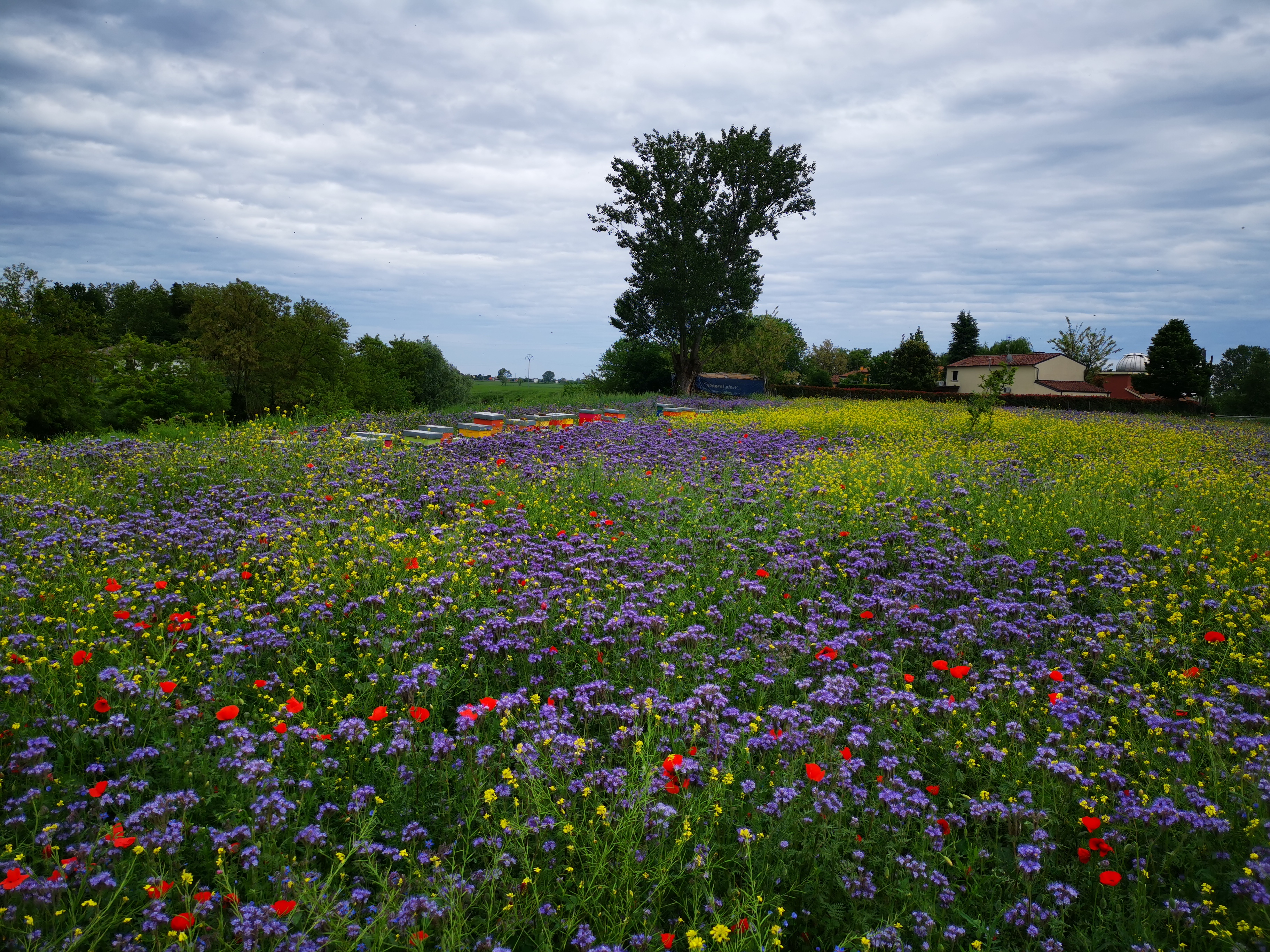The benefits of green manure for pollinating insects
We had already talked about how important pollinators are for agriculture in a previous article. In Europe, 80% of cultivated species depend on the activity of these precious animals. Unfortunately, however, the number of pollinators is falling dramatically due to pesticides used in agriculture, climate change and, above all, the lack of food due to the loss of natural habitats.
Pollinators increase the world value of agricultural production by about 260 billion euros a year and yet, despite this, most agricultural practices continue to contribute to their extinction, ignoring – or perhaps underestimating – the serious consequences that it could entail.
Instead, there is a way in which farmers too could do their part to avoid the permanent disappearance of bees and other useful insects. How? In addition to organically cultivating, they can practice green manuring, a technique that helps pollinators not to starve and, at the same time, makes the soil fertile. In short, a win-win for both!
What is green manure
Green manure is a practice used in agriculture which consists in planting certain crops to increase or maintain fertility and the good structure of the soil. These crops, in fact, allow for the reintegration of important organic substances in the soil and help keep it aerated and drained.
The main plants used to make green manure are legumes, grasses and crucifers (or brassicas):
- legumes because they provide an important contribution of organic nitrogen to the soil
- species with a very developed root system because they allow the soil to be structured even in the deepest layers, eliminating the tilling sole
- plants that develop a lot of plant mass because they provide the soil with organic carbon and allow weed control
Green manure is not sowing destined for harvesting. The crops, in fact, are mown and left to slowly decompose on the ground as surface compost. Alternatively, they can be buried in the first five centimeters of the soil, where the optimal conditions for proper decomposition are present.
What are the advantages of green manure
Green manuring offers considerable advantages and for this reason it should always be foreseen and inserted within the rotation and rotation of arable and horticultural crops. A simple and economical way to give back to our soil the substances consumed during cultivation, but also to contain spontaneous herbs (let’s not call them weeds, please! Everything exists for a reason in Nature) thanks to the mulch that keeps the soil well covered .
In particular, green manure allows:
- an increase in organic substances,
- an improvement of the soil structure,
- a control of wild herbs and parasites,
- an increase in soil biodiversity
- protection of the soil from erosion thanks to constant coverage.
It should be remembered that the green manure technique brings numerous benefits to any type of soil, from the field cultivated at an industrial level to the simple home garden. In fact, even in the vegetable garden, green manure is very useful for soil fertility, especially when vegetables are grown that consume many resources such as tomatoes, aubergines, peppers, cabbage, melons, etc.
Which green manure to plant to help pollinating insects
By making green manure with honey and pollen plant species, in addition to the benefits already listed for your soil, you can also create a place for the grazing of bees and other pollinating insects. Moreover, sowing honey crops also allows farmers to comply with the obligations established by the CAP regulation relating to Efa areas (areas of ecological interest).
Among the different species of honey and pollen plants that you can sow we find: Facelia, Clover, Buckwheat, Flax, Sunflower, Serradella, Coriander, Caraway, Calendula Mustard, Fennel, Cornflower, Mallow, Dill, Agrostemma. Sometimes the seeds of these plants are difficult to find on the market but luckily there are ready-made mixes of honey seeds on the market (other Examples in Semfor and Biasion).. In general, the sowing period runs from the end of winter to the beginning of summer.
To help pollinators, we advise you to make green manures with the largest number of species of these plants, to ensure these wonderful creatures a period of flowering – and therefore of food availability – prolonged to the maximum. Obviously, you will have to be careful not to cut the green manure at the beginning of flowering, to allow the collection of nectar or pollen (usually in fact the shredding for the burying takes place with a 10-20% flowering of the mixture).
Green manure, biodiversity and beauty
The plurality and diversity of honey and pollen species used to make green manure can also contribute to the reintegration of biodiversity in the area, and agriculture that respects the environment and nature should always safeguard biological diversity.
Furthermore, by increasing biodiversity, you can also count on the presence of insects and organisms useful for crops, which will allow you to reduce any pesticide interventions.
If that were not enough, sowing these plants useful for pollinators, in addition to restoring life and biodiversity, you will also produce a lot of beauty, due to the wonderful flowering that characterizes these species. And we at Saving Bees know this well, who for years have been committed to creating in Italy – and who knows, maybe soon also abroad – our beautiful beekeeping oases where we cultivated a lot of biodiversity surrounded by bright colors, intoxicating scents and lots and lots beauty.
Author: Petra Invernizzi, Bee-Copy @Pinvi

